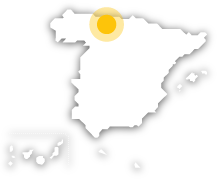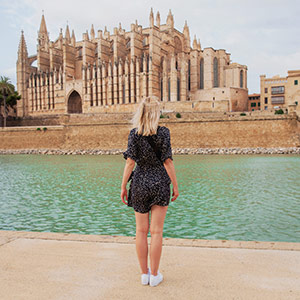
Picos de Europa National Park

The mountains and forests of the brown bear
Spread across the provinces of Asturias, Cantabria and León, the Picos de Europa National Park is a perfect example of an Atlantic ecosystem. Packed with oak and beech groves, the park takes its name from the impressive rock formations here. It is also home to two of the most emblematic animals that live in Spain: The brown bear and the Iberian wolf… but there is still much more.
The must-sees of Picos de Europa
Picos de Europa National Park
It is located between the provinces of Asturias, Cantabria and León, in the heart of the Cantabrian Mountains, in northern Spain.
León (Castilla y Leon)
Cantabria
Principality of Asturias
Asturias (Principality of Asturias):
- Amieva
- Cabrales
- Cangas de Onís
- Onís
- Peñamellera Alta
- Peñamellera Baja
- Camaleño
- Cillorigo de Liébana
- Tresviso
- Oseja de Sajambre
- Posada de Valdeón
Cantabria (Cantabria):
León (Castilla y Leon):
Carretera N-625, s/n
24916 Oseja de Sajambre, León (Castilla y Leon)
Travesía de Soto, 15
24915 Posada de Valdeón, León (Castilla y Leon)
Área de servicios de Buferrera
33589 Lagos de Covadonga, Cangas de Onís, Asturias (Principality of Asturias)
39584 Tama, Cillorigo de Liébana, Cantabria (Cantabria)
Activa JS
In images
What you need to know
-
What you will find
Spread across 11 municipalities, Picos de Europa is Spain's only inhabited National Park, offering travellers a unique experience. Rural life and nature have co-existed in this unique environment for centuries. Here, for example, you can discover a third of the vertebrates that exist in the Iberian Peninsula, distributed across its varied landscapes. Meadows, lakes, mountains such as the Naranjo de Bulnes, gorges, and impressive forests host the park's inhabitants. Large mammals, like roe deer and chamois share territory with grouse and Egyptian vultures; just a small sample of the numerous bird life that can be found here.
-
Routes around the Park
The park is accessible by car and, once you're there, you'll find more than 30 self-guided routes. There are also four visitor centres where you can find information and decide the best way to explore the Picos de Europa. Free guided tours are available from July to September in the three provinces forming the park. There are also some thirty viewpoints throughout the area, where you can fall in love with the spectacular scenery that awaits you.Map of Picos de Europa National Park
-
Don't leave without...
The Real Sitio de Covadonga is in Cangas de Onís. In this religious complex, the Santa Cueva and the Basilica stand out, which commemorate the battle of Covadonga in the year 722. The Kingdom of Asturias was erected in these lands, the first step of the Reconquista, a place with a lot of history.Before leaving, you must try the delicious local dishes. Special mention goes to the blue cheeses, like Cabrales, Bejes-Tresviso and Valdeón. Other dishes worth making a trip to one of the local restaurants for are the classic Asturian fabada, red meat dishes, and the famous pitu de caleya, a local breed of chicken.






















